Lenné-garden in Blumberg
The garden is located in Barnim district, a few kilometers from the North-Eastern border of Berlin, in Ahrensfelde (Blumberg colony), near the exit „Berlin-Hochenschönhausen“ of the orbital motorway A10, crossing with B 158 state road.
Count Friedrich Ludwig von Arnim-Boitzenburg was 40, when he bought the Blumberg manor. Adequatly to his social status, he employed for the construction of his new residence the most famous prussian architects – Friedrich August Stüler for project of the mansion house and Peter Josef Lenné for the mansion garden design.
Mansion house burned down in the last days of the II World War.
The garden suffered a lot due to natural and also human forces (especially in the seventies).
Today, thanks to the efforts of numerous people and institutions, public projects and work of the Regional Park „Barnimer Feldmark” Association, Lenné-garden in Blumberg turned into a tourist treasure near the Berlin's border.
The history of the Blumberg garden
Until the Reformation the Blumberg estate belonged to the bishop. It was sold for the first time in 1520. In 1681 Blumberg was bought by Count Friedrich Ludwig von Canitz- a diplomat and a poet in his spare time. In his era, the manor became more prestigious – a baroque garden with canals and ponds was built.
In the following years the owners of the manor changed many times, but the garden wasn't developed until count von den Schulenburg (owned Blumberg between 1775 and 1790), who enlarged it and planted new tree species.
In 1836 count Friedrich Ludwig von Arnim bought the manor. To expand the property, he hired two of the most famous experts in Prussia – architect Friedrich August Stüler, and a garden designer Peter Josef Lenné. Stüler built a classicist mansion, and Lenné designed the landscape garden. All of his directions were followed.
In 1931 family von Arnim sold the Blumberg manor.
In 1945 the mansion burned down.
In the mid-seventies some unfortunate undertakings took place in the garden: new residential and commercial buildings, a shooting range and a playground were built, numerous trees were cut, drain system was rebuilt, part of the garden was surrounded with a brick wall. The garden, without proper care, grew wild.
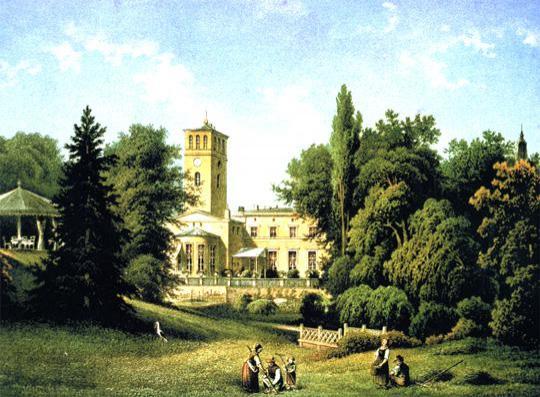 Blumberger mansion in 1860
Blumberger mansion in 1860
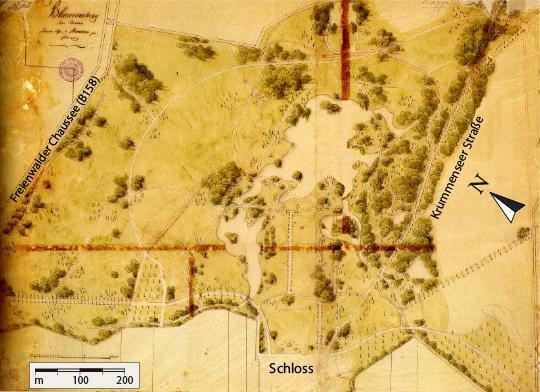 Design of the garden with indicative tips. (1840)
Design of the garden with indicative tips. (1840)
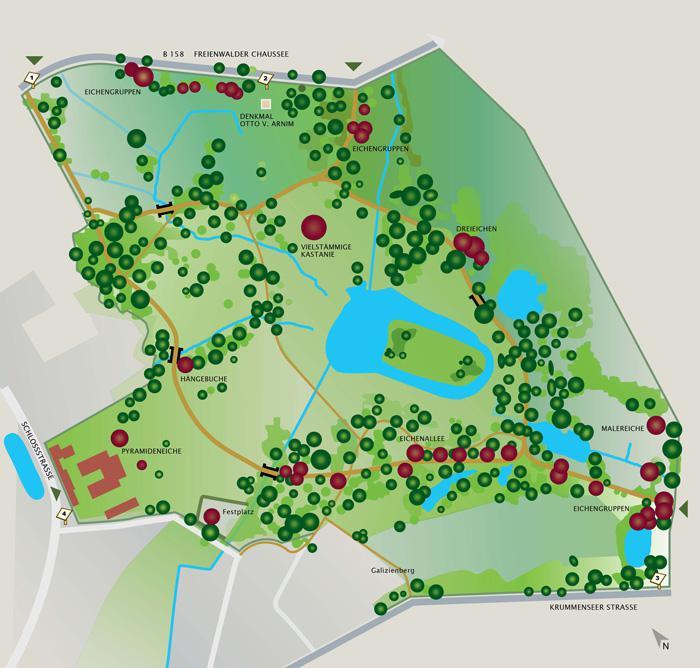 Blumberg garden map
Blumberg garden map
The garden today
Today, majority of the garden was restored. The barracks, standing on the foundations of the former mansion house, and the brick wall were both demolished. Numerous alleys and paths were restored, wooden footbridges were rebuilt.
The island with the group of old oaks is visible again. Some of the drains were recultivated, the garden was also cleared of self-planted trees, bushes and poplars, planted in the sixties.
The whole garden is under constant care again.
Current state of the stand of trees
Part of the garden tree stands originated between 1775 and 1790.
The same age are some of the trees standing in the alleys and avenues – also those from the tree avenue along the B158 road, and those from the oak alley.
From the „Lenné times” remained (so they are around 170 years old) the chestnuts, beeches, elms, oaks, maples, larches and most of the limes and planes.
Birches and black locusts were planted in the beginning of the XX Century. Unfortunately, large part of the oldest stands of trees suffered heavily from an immense storm, that hit the garden in the summer of 1959. A lot of the trees were also cut during the construction works in the GDR era.

 In the Blumberg garden
In the Blumberg garden
 In the Blumberg garden
In the Blumberg garden
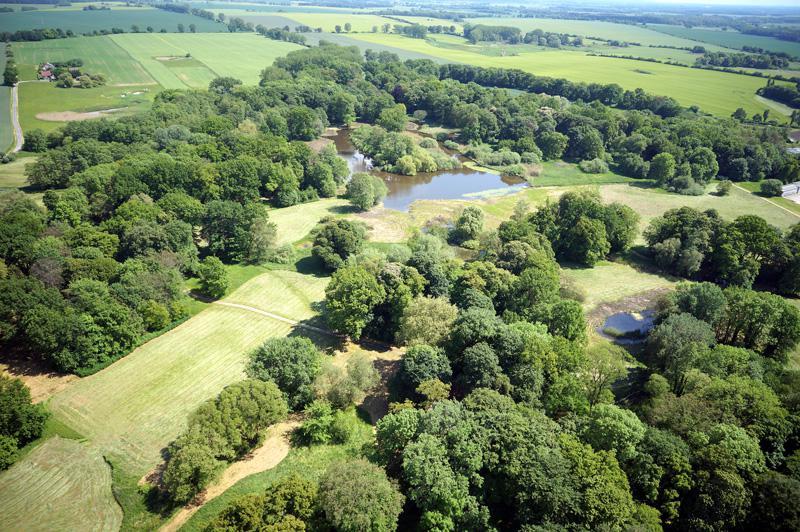

References:
-
Duncker, Alexander „Die ländlichen Wohnsitze, Schlösser und Residenzen......“, Bd. VII, Berlin 1864
- "Peter Josef Lenné - Parks und Gärten im Land Brandenburg", Wernersche Verlagsgesellschaft, 2006)
- Theodor Fontane, Wanderungen durch die Mark Brandenburg, Vierter Teil: Spreeland. Beeskow-Storkow und Barnim-Teltow.
- 3-teiliges Informationstafelsystem, Regionalpark Barnimer Feldmark e.V.
Photos: Banim plus Lutz Weigelt, Luftbild Barnim Dr. Reinhard Schliebenow
Drawings: büro-ix Karola Richardt, Petra Kaden
Maps: IS.RADWEG. Detlef Kaden
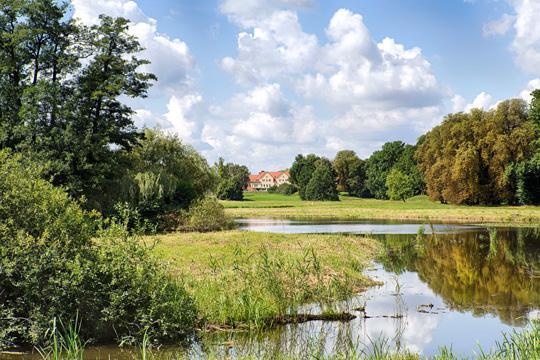 Current garden view
Current garden view![Access from Berlin and Blumberg map [PDF 0.4 MB] Access from Berlin and Blumberg map [PDF 0.4 MB]](https://fotos.verwaltungsportal.de/seitengenerator/5e585ae8d3024da60da223617713537483491/gross/lage-und-anfahrt.gif_6.jpg)